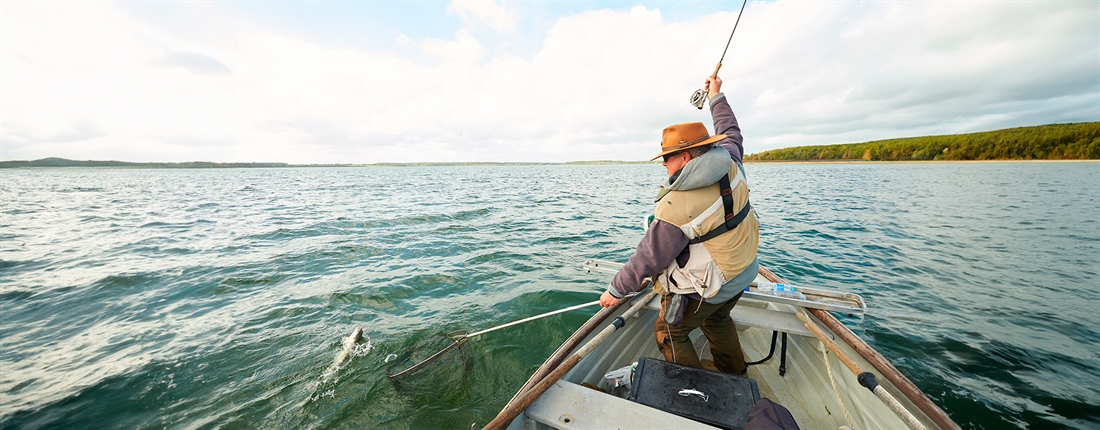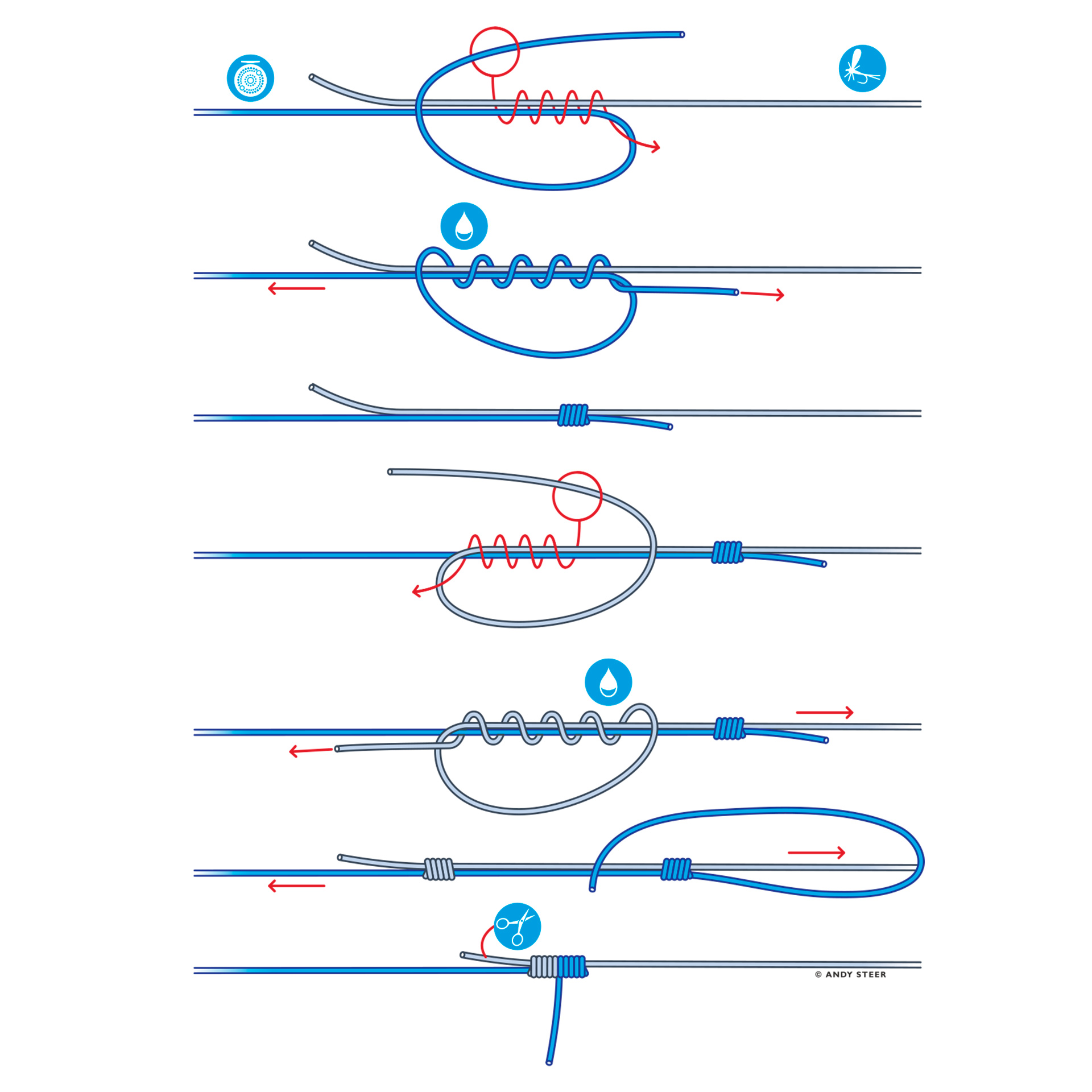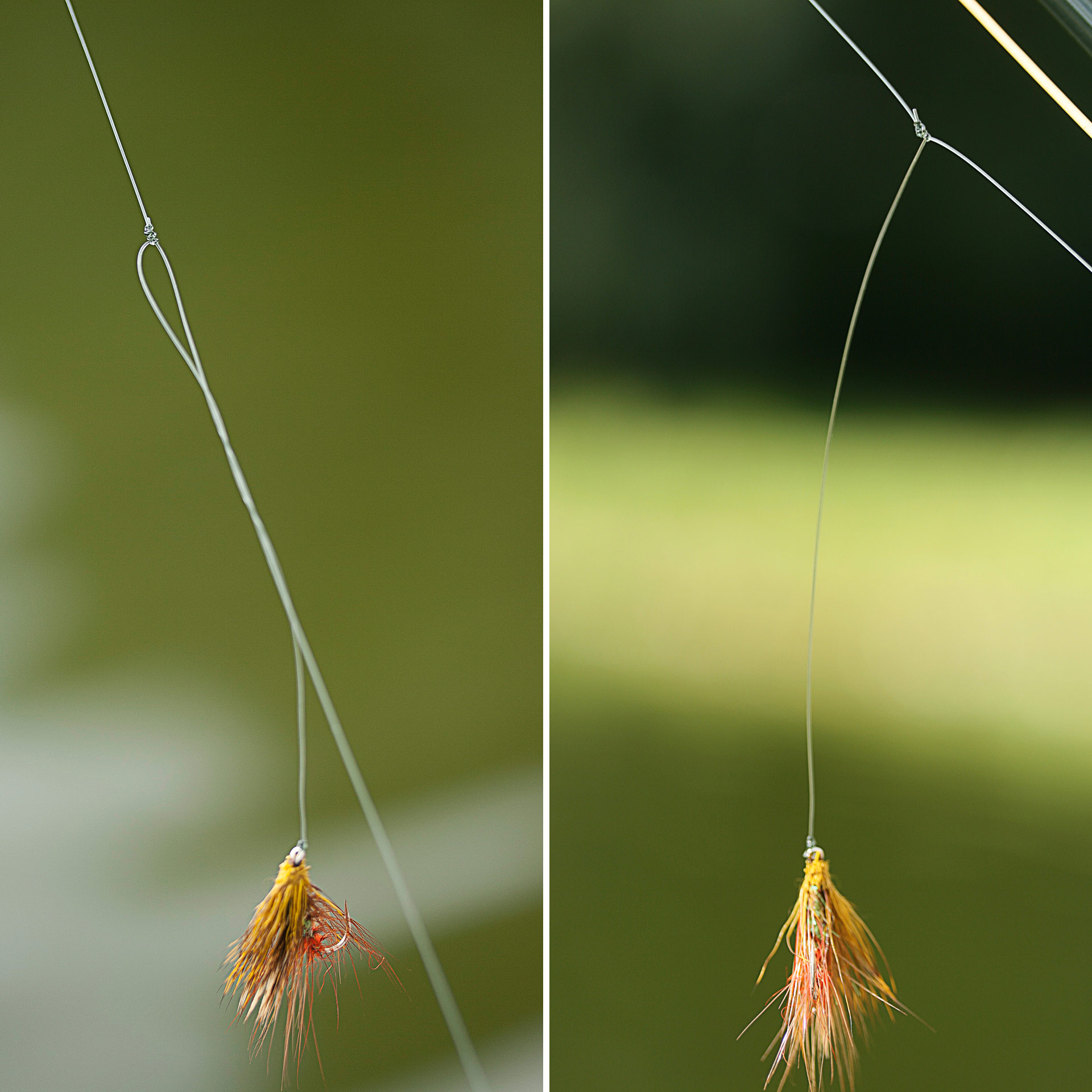Tips for better droppers on stillwaters
Stan Headley offers a no-nonsense guide to knots, length and spacing

A thoughtfully tied dropper can mean the difference between success and failure on stillwaters. Here’s how to master this essential skill.
How long should droppers be?
My preferred dropper length is 4in or 5in, but if I am fishing in a match or I’m uncertain about fly choice, I will start with a slightly longer length (6in) to allow for a number of fly changes during the day. If you are a compulsive changer of flies, it makes sense to tie long droppers, or be prepared to change your leader and create new droppers.
If I am fishing flies with a very slow retrieve or dry-flies in a flat calm, I will use longer droppers to keep the flies away from the main leader – this can be a benefit if fish are a tad suspicious.
On a windy day, I would be happy to fish a shorter dropper of around 3in as I find it lowers the amount of tangles.
Whatever the dropper length, make sure your leader extends fully when casting to ensure your flies are nicely spaced.
Which knots are best?
Leader knots should be kept simple. Avoid the use of double blood knots in leader material of less than 0.22mm diameter. The double blood knot will reduce the breaking strain of mono by an alarming degree.
My preference is the water knot: three turns for mono of 0.18 mm diameter and two turns for anything greater. I appreciate the argument that this is a poor knot because the dropper length lies alongside the main cast, but it is a very strong knot, hardly reducing the breaking strain of the mono.
If I find my dropper length getting too short for comfort I use a double grinner knot to create a new dropper length. First, I will remove the site of the original dropper length (snip on either side of the water knot) then I construct the double grinner. By using the double grinner I avoid having to pull the whole leader (with flies attached) through the new knot. It will cause a shortening of the overall leader length but as we are talking about inches in an 18ft leader, it is nothing to get seriously worried about.
Always choose the loose end of the double grinner that points toward the end of the leader as the dropper, otherwise stress on the knot from a fish will cause it to break.
Whatever the knot, it is best to wet it before drawing it tight. If using co-polymer, be extra careful – always tighten a co-polymer knot slowly and steadily.

How do you stop tangling?
A tangled dropper is due almost entirely to a fault in casting style. The only exception to this rule is if you create dropper lengths that are too long.
Some fly-fishermen deliberately introduce a half-hitch knot to the dropper length, which tightens around the water/double grinner knot. This causes the fly end of the dropper length to stick out at right angles and doesn’t compromise the breaking strain of either leader or dropper.
How much space should there be between droppers?
There is no definitive answer. It will depend upon what fishing style you employ.
On a dry-fly leader I generally fish a 15ft leader with only one dropper somewhere near the middle. For wet-flies, nymphs and Buzzers my leader will be longer, 18ft with two droppers. The middle dropper will be 6ft up from the point fly and the top dropper another 6ft up from that.
The general rule is that when fishing near the surface, keep the distance between the droppers as long as possible, and reduce the gaps when fishing at depth.
Not everyone will agree with me, but I’ve found through trial and error that the distance between droppers is less important on a sinking line. I think fish are more wary near the surface and a crowd of flies and leader may deter them. In a wave, you can have less space between droppers, but in a flat calm, increase the gap.
How far should the top dropper be from the end of the fly-line?
Pulling a floating line through the surface film creates a disturbance and it is a very good plan to keep your top dropper as far away from this as possible.
Where once everyone tied slim needle knots or formed a slender loop with the line’s core, today most floating lines are fitted with welded loops or are supplied with braided loops for you to attach. These loop-to-loop connections can create surface disturbance.
When using a line with a loop at the end I will extend my standard wet-fly leader by adding a length of tapered leader or straight mono to increase the distance to the top dropper. For dry-fly fishing, this is less important as the limited or slow movement creates little disturbance to put fish off.
How can you prevent the top dropper from sticking in the tip ring when landing a fish?
This will happen from time to time if you use very long leaders, and the only way to avoid it is (a) always catch your fish on the top or middle dropper, or (b) be aware at all times that this is a likely sad end to a tussle if using a long leader. As (a) is impossible, we are left with (b). I always fish 10ft rods and know that if the distance between my top dropper and point fly much exceeds 12ft I may be in trouble. Consider the maximum distance between the rod tip, when the rod is held high in the air in your right hand, and the point fly in the fish’s mouth with the net extended in the water by your left hand. You can extend this distance by standing, but for safety this is not recommended.
How many droppers should you use?
Some anglers use three droppers when fishing nymphs or Buzzers as it allows them to fish at more depths. I prefer to stick to two droppers unless I need the weight of an additional fly to fish deeper.
In calm conditions, if fishing high in the water, I reduce the number of droppers. If fishing near weedbeds, consider using no droppers at all because a fish crashing through heavy weed growth will shed the hook 99 times out of a 100.

Tie a half hitch in the dropper length and tighten it around the water knot. The dropper will stand away from the leader and be less likely to twist.





